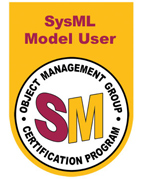1990 – National ITS Architecture
Michael Krueger’s influence on Systems Engineering for ITS started in 1990 while at Hughes Aircraft Co. In preparation for the first Intelligent Vehicle Highway Systems (IVHS) America meeting in Reston, Virginia, Michael recommended that Ms. Nancy Rantowich—then the head of Hughes Aircraft Co.’s Mission Analysis and Studies department—present Hughes’s systems engineering approach to develop the National Architecture. It is based on the classic Concept Exploration approach used at Hughes for many defense and aerospace architecture studies. Adopted by the Federal Highway Administration, and refined for Transportation. The resulting methodology was used for the National and subsequent Regional Architectures. In 1994 IVHS was changed to Intelligent Transportation Systems (ITS) as it is known today.

1998 to 2003 – Training and Federal Regulation 23 CFR 940.11
Between 1998 and 2000, Michael developed the first ever systems engineering for ITS training course for the FHWA and taught two pilot classes to California Department of Transportation (Caltrans) and local agency staff in California.
In 2001, As a result of Michaels efforts, the FHWA released regulation 23 CFR 940.11 "All ITS projects funded with highway trust funds shall be based on systems engineering analysis," The FHWA developed its Systems Engineering training class (based on the Caltrans course and Michael was a principal reviewer). The FHWA course was taught throughout the country from 2000 to 2003 and Michael was one of the instructors as the subject matter expert in Systems Engineering. Michael’s original Systems Engineering class was updated and taught throughout California over 400 attendees from local agencies to Caltrans attended the 3-day class over a 2-year period.
2004 – Systems Engineering Guidebook for ITS
In 2004 Michael proposed to Caltrans, with FHWA support, a Systems Engineering Guidebook for ITS project in which a handbook would be created and used as a guide in the procurement and development ITS projects. Caltrans agreed to release a Request for Offer for a Systems Engineering Guidebook for ITS and Michael Krueger’s team responded to the RFO and won the contract to write the Systems Engineering Guidebook for ITS. Michael Krueger as the principle author led a 4-person core team with the Project Manager Randy Woolley, FHWA Frank Cechini, and Dr. Kevin Forsberg who developed the original development Vee, as principle reviewer with a lengthy list of reviewers from private and public agencies. The core team included Michael Krueger with Nancy Rantowich, Dr. Carol Jacoby, and Mr. James Lewis as contributors. The Guidebook for ITS was initially released in late 2005.

2006 – NYCT Training and the Systems Engineering Guidebook for ITS Website
In 2006 Michael tailored the systems engineering material for New York City Transit and provided the first 3-day systems engineering training for the MTA. In 2007, the Systems Engineering Guidebook was updated, and a website was established for the Systems Engineering Guidebook for ITS. The website was developed to access important Guidebook information quickly such as checklists, templates, Metrics, etc. The FHWA took the Guidebook and created a scaled down version for agency use. Mr. Ronald Ice was added to the team to develop the website and he later became a contributor to the Guidebook with an update of the capabilities chapter in 2009.
Today it continues to be used as a guide for developing ITS projects. It was the most downloaded FHWA document over 140,000 downloads the first 2-years.

Next Steps...
Get in Touch with ASE to learn more about what we can offer.

